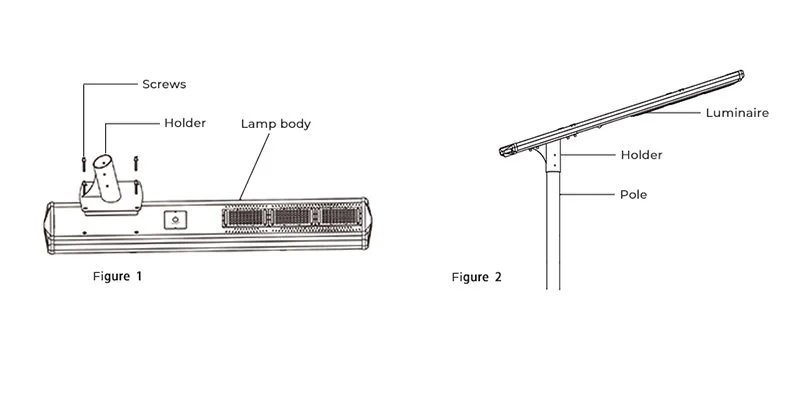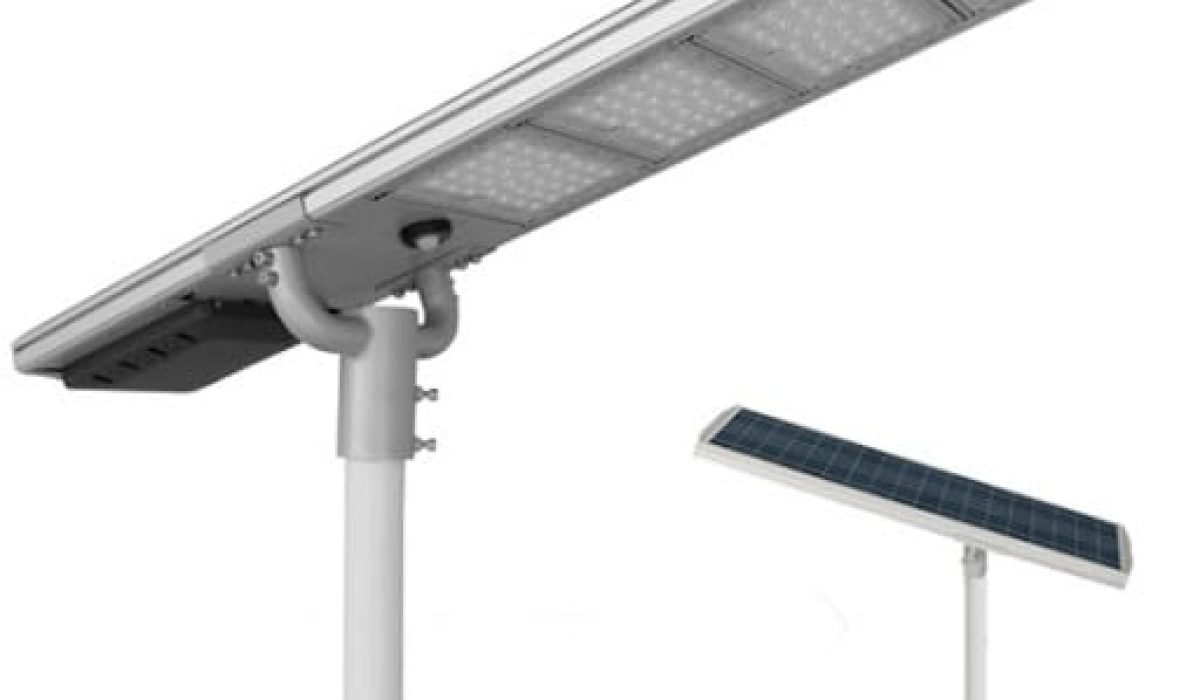All-in-one solar lights promise efficiency—but only if installed and chosen correctly.
Mistakes in selecting, installing, or maintaining all-in-one solar street lights can reduce performance, shorten lifespan, and waste investment.
Let’s break down the most common errors and how to avoid them.
Choosing the Wrong Wattage or Lumens?
Too bright or too dim—neither is good. Choosing the wrong wattage can hurt both safety and efficiency.
Overestimating or underestimating brightness leads to poor lighting results or wasted energy. You must match lumens with the area size and usage.
How to Get It Right
Start by identifying the application:
| Application | Recommended Lumens |
|---|---|
| Side Roads | 2000–4000 lumens |
| Parking Lots | 5000–8000 lumens |
| Parks & Pathways | 1500–3000 lumens |
| Main Streets | 8000–12000 lumens |
Use this formula:
Required Lumens = Area (sqm) × Lux Level
Where:
- Lux Level is based on use (e.g., 10 lux for parks, 30 lux for roads)
- 1 lux = 1 lumen/m²
Choosing too much wattage increases cost and may cause glare. Too little, and your area stays dark.
Always ask for a photometric layout or lux simulation from your supplier.
Ignoring IP Rating and Weather Resistance?

If it’s going outdoors, it needs to fight the weather. Period.
Lights without a proper IP rating (minimum IP65) are vulnerable to water damage, dust, and corrosion—especially in tropical or coastal areas.
Why It Matters
An IP65 rating means:
- 6 = dust-tight
- 5 = resistant to water jets
For areas with heavy rainfall or high humidity, IP66 or IP67 is better.
Without this protection, expect:
- Rusty battery compartments
- LED flickering or failure
- Short circuits and warranty voids
Confirm with test reports, not just labels. Fake “IP66” tags are common on cheap units.
Buying Cheap or Unverified Products?
Tempted by a bargain? Be careful—it might cost more in the long run.
Low-priced models often come with poor materials, fake specs, and no support. They look good at first but fail within months.
What to Watch For
- No CE, RoHS, or TUV certifications
- No warranty details in writing
- Overpromised specs like “10,000 lumens from 10W”
Always choose trusted vendors who can:
- Show real project photos
- Provide test reports
- Offer technical support and parts replacement
A client of mine once lost an entire shipment due to fake wattage claims. Since then, we always verify samples before bulk orders.
Poor Installation Angle or Direction?

Even the best panel won’t work if it’s pointing the wrong way.
Improper tilt or facing the wrong direction drastically reduces charging performance, leading to dim lights or early shutdown.
Best Practices
- In the Northern Hemisphere, solar panels should face true south
- Tilt angle should match local latitude ± 5 degrees
- Avoid placing near buildings that block sun
Use tools like:
- Compass apps
- Solar pathfinder tools
- Shadow analysis software
Don’t guess—optimize panel exposure to get the full charge daily.
Skipping Site Assessment?
You wouldn’t build a house without surveying the land—same with solar lights.
Without assessing the site, you risk poor lighting coverage, shading issues, and reduced system efficiency.
What to Assess
- Shading from trees, poles, or buildings
- Pole height (6m–9m is typical for street lights)
- Spacing between units (based on lux needs)
- Other light sources that may affect sensors
A proper layout ensures:
- Even light distribution
- No dark patches
- Maximal solar gain
Always do a walkthrough or request a layout plan from the supplier.
No Battery Consideration?

The battery is the heart of your light—don’t overlook it.
Choosing the wrong battery type or size leads to short backup time, reduced lifespan, and poor nighttime performance.
What to Look For
| Battery Type | Lifespan | Notes |
|---|---|---|
| Lead-acid | 2–3 years | Cheap but heavy and short-lived |
| Li-ion | 4–6 years | Good balance of price and performance |
| LiFePO4 | 6–10 years | Best for hot climates and long cycles |
Also check:
- Capacity in Ah (amp-hours)
- Depth of discharge (DoD)
- Charge/discharge cycles
Undersized batteries = lights die before dawn.
Oversized = wasted cost and space.
Match battery to:
- Expected hours of lighting
- Local sunlight hours
- Seasonal changes
Lack of Maintenance Plan?
Solar lights are low-maintenance—not zero-maintenance.
Neglecting panel cleaning or ignoring housing wear reduces charging efficiency and leads to system failure.
Simple Maintenance Tasks
| Task | Frequency |
|---|---|
| Clean solar panel | Every 1–3 months |
| Check seals and bolts | Every 6 months |
| Inspect for corrosion | Yearly |
| Firmware update | As needed |
In dusty or rainy zones like central Uganda, clean more often.
Skipping maintenance shortens system life by 30–40%.
Not Using Smart Features Where Needed?

Lights can be smarter—if you let them.
Missing out on motion sensors, dimming, or remote control reduces both performance and efficiency in smart city or adaptive environments.
Useful Smart Features
- Motion sensing: Light only turns on when needed
- Time-based dimming: Saves power in low-traffic hours
- Remote monitoring: Spot issues without field visits
- Group controls: Synchronize zones like parking lots
These features:
- Extend battery life
- Reduce light pollution
- Cut operational costs
Not every project needs them, but in urban, smart, or eco-sensitive zones—they’re worth it.
Inadequate Warranty or After-Sales Support?
If something goes wrong, who helps?
Many cheap solar lights come with no real warranty or support. When they fail, you're left with dark streets and no one to call.
Smart Questions to Ask Before Buying
- What’s the warranty length? (minimum 2 years is good)
- Is it full or limited?
- Do they offer spare parts?
- Can they support remotely or onsite?
Reliable vendors will offer:
- Clear terms
- Fast responses
- Genuine parts
Support matters—especially when you're managing dozens or hundreds of units.
How to Avoid These All in One Solar Street Light Mistakes?

Here's your quick checklist to avoid all these issues:
✅ Pre-Purchase
- Confirm IP65+ rating
- Ask for certifications (CE, RoHS, etc.)
- Review battery type and specs
- Match wattage/lumens to site needs
- Use suppliers with verifiable projects
✅ Installation Phase
- Assess shading and layout
- Optimize panel angle and direction
- Mount at correct pole height and spacing
✅ Post-Installation
- Plan a simple maintenance schedule
- Enable or configure smart features
- Confirm after-sales support contact
Every step matters—from unboxing to nightfall.
Conclusion
Mistakes in solar lighting can ruin your return on investment. Choose wisely, install properly, and maintain consistently. With smart planning, all-in-one solar street lights deliver long-term savings, brighter streets, and fewer headaches.


